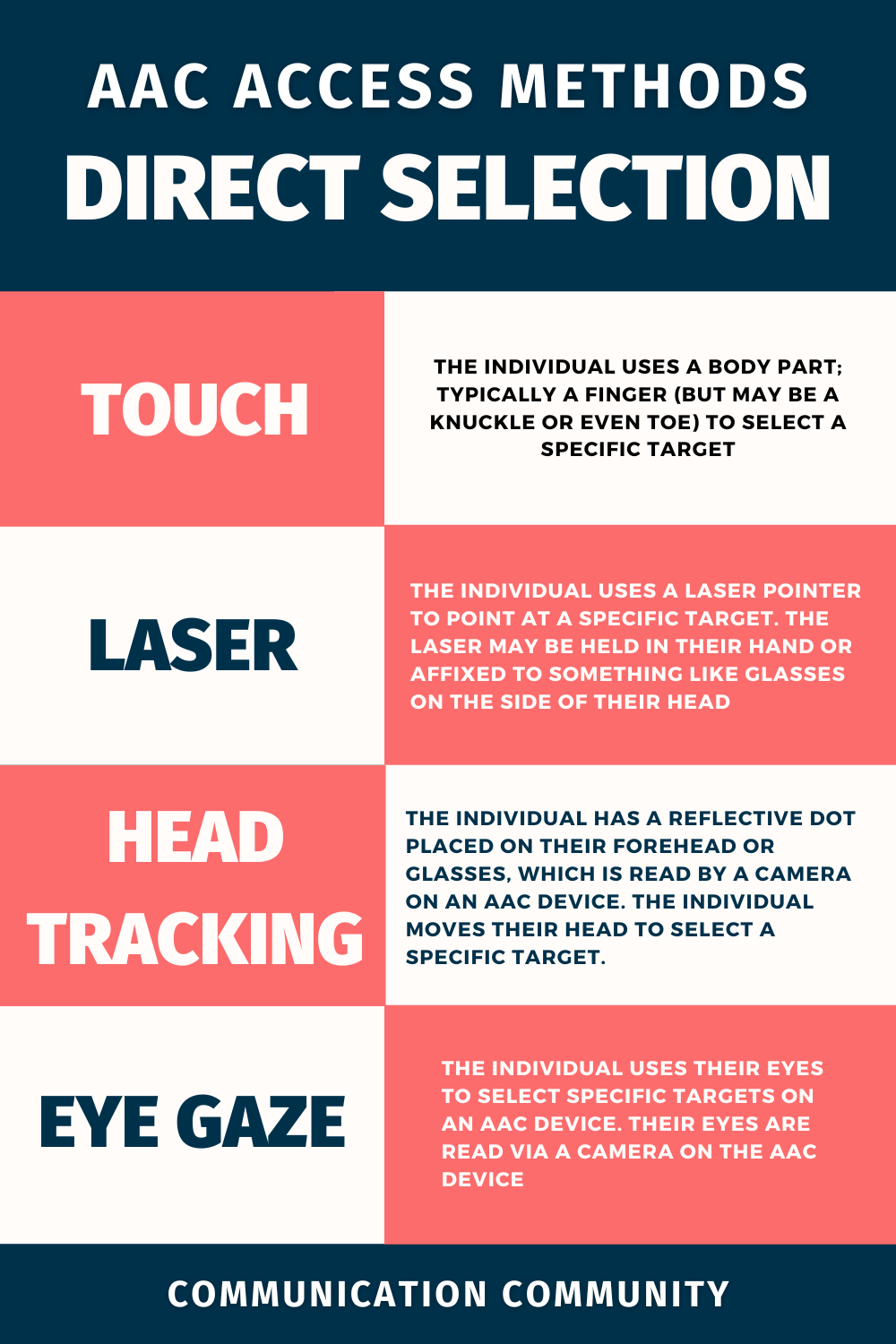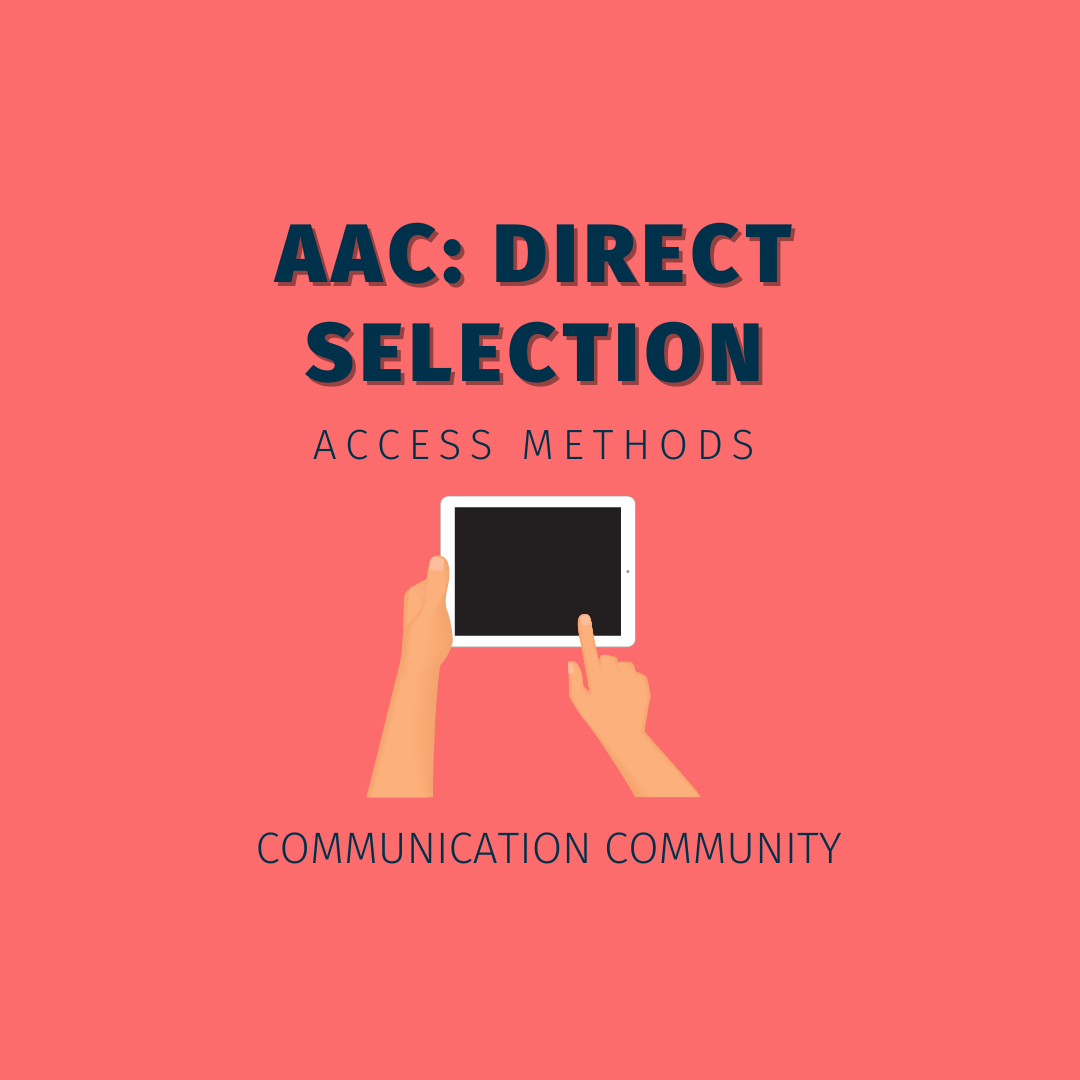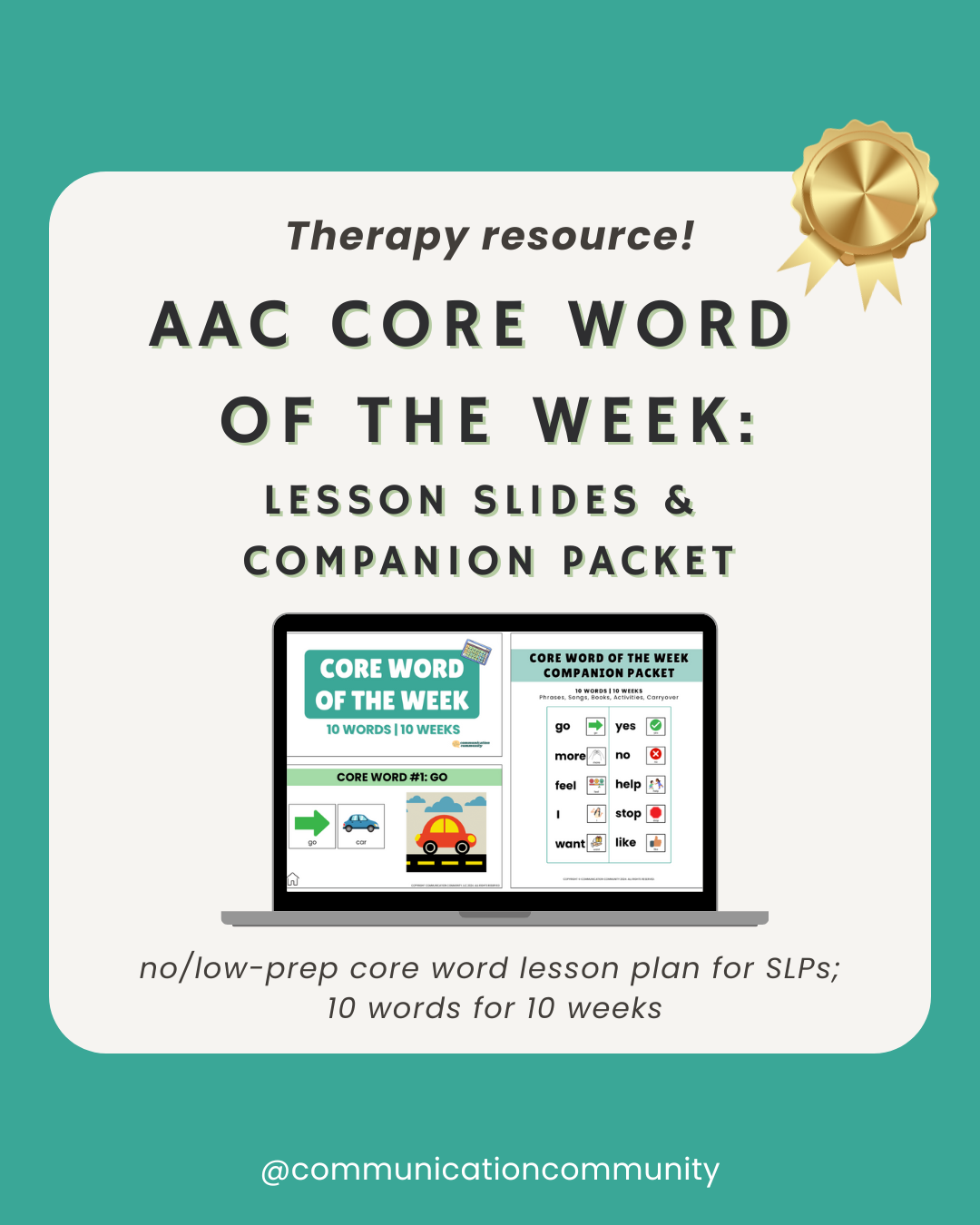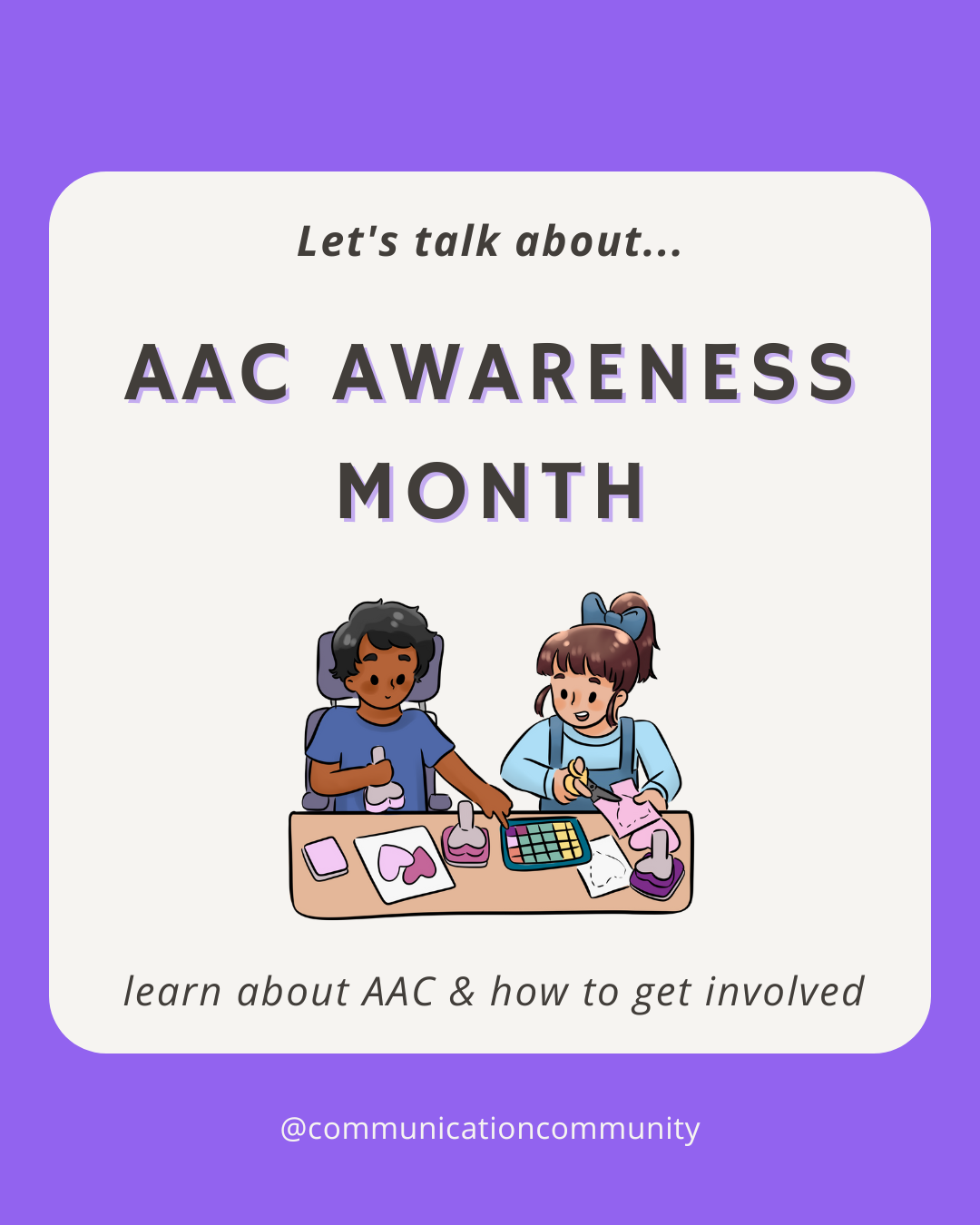In this post, we will cover different direct selection access methods. It should be noted that our post covers some of the more commonly used direct selection access methods; however, there can be others as well, like a joystick or mouse control.
What is Direct Selection?
Direct selection is a method of accessing an AAC system where an individual selects a specific target with a body part or accessory. It differs from indirect selection where an individual selects a specific target given a set of choices.
Types of Direct Selection Access Methods
Touch
An individual using a low, mid, or high AAC system may directly select their target word(s) or phrase by finding the specific word or symbol in their communication book, single overlay device, or SGD. If the selected target is the word “more,” they may touch it with their finger, hand, or even foot. On a low tech device, “more” would not be heard via a speech-generating output, but it would be on a mid or high tech device.
Laser Pointers
Laser pointers may be fixed onto the side of one’s head, which they can use to point at letters or symbols on a low tech communication or alphabet board. Lasers may also be used to point at specific objects or places in the environment, e.g. directing a laser at the couch may indicate they want to sit on the couch. They are typically only used as low tech AAC systems.
Head Tracking
Head tracking, sometimes referred to as head pointing or mouse dwell, is when a reflective dot or dots are placed somewhere on an individual’s head, or something they are wearing (e.g. glasses), and cameras track where their head is moving in order to use a high tech SGD.
Eye Gaze
Eye gaze, also known as gaze interaction, is when an individual uses a high tech SGD with their eyes via infrared technology. Infrared light (safely) reflects on an individual’s eyes, and the SGDs can track how they move. An individual can use gaze interaction systems to communicate via AAC software as well as browse the internet, compose emails, and more.

Changing and Customizing AAC Access Methods
Many AAC software systems can be adjusted so that a button has to be pressed for a certain amount of time before it is selected (sometimes called a hold and/or release time in device settings). If you think about accessing a smartphone, you probably just have to tap a button quickly and it is selected. Some individuals benefit from touching a button for a slightly longer amount of time, e.g., .25 seconds, before it is selected. If an individual has fine motor difficulties and tends to drag their finger across a screen, then a hold modification of .25 seconds may be helpful so that any button they may hit as they drag their finger slightly is not selected. If an individual uses a head tracking or eye gaze system, the amount of time they have to look at a button or area before it’s selected can be lengthened or shortened.
Direct Selection Accessories
AAC accessories, such as straps, mounts, stands, keyguards, and styluses may assist individuals access their AAC devices more successfully.
Why Use Different Access Methods?
Individuals who use AAC systems often have communication impairments secondary to other disabilities or impairments. These may include motor skills, visual impairments, auditory impairments, and paralysis, among others. Due to these impairments, they may need support or modifications in order to use (i.e. access) their AAC systems effectively.
How to Choose an AAC Access Method
Many different health professionals may be involved in selecting access methods for using AAC. Since many speech-language pathologists (SLPs) work with individuals using AAC, they may trial different access methods for individuals. Additionally, many occupational therapists (OTs) and physical therapists (PTs) are involved in the process to select alternative access options. As always, the individual using AAC and their families should be consulted and included in this process as well.
How to be a Good Communication Partner with AAC
Individuals who use any type of AAC, and especially those who may use different types of access methods, may need more time than others to communicate their message. Allowing the individual adequate time to generate and communicate their message may provide better quality and more meaningful communication for all - which is what we’re all looking for after all!
Citations/further resources:
https://www.ncbi.nlm.nih.gov/pmc/articles/PMC3663592/
https://www.prentrom.com/caregivers/aac-device-access-options




![How to Write AAC Goals [with goal bank]](https://www.communicationcommunity.com/content/images/2024/03/How-to-Write-AAC-Goals---ghost-cover.png)
![How to Write Neurodiversity-Affirming Speech Therapy Goals [with goal bank]](https://www.communicationcommunity.com/content/images/2023/12/How-to-Write-ND-Goals---ghost-cover.png)

![What is Modeling Without Expectation? [AAC resource]](https://www.communicationcommunity.com/content/images/2023/03/1.png)
